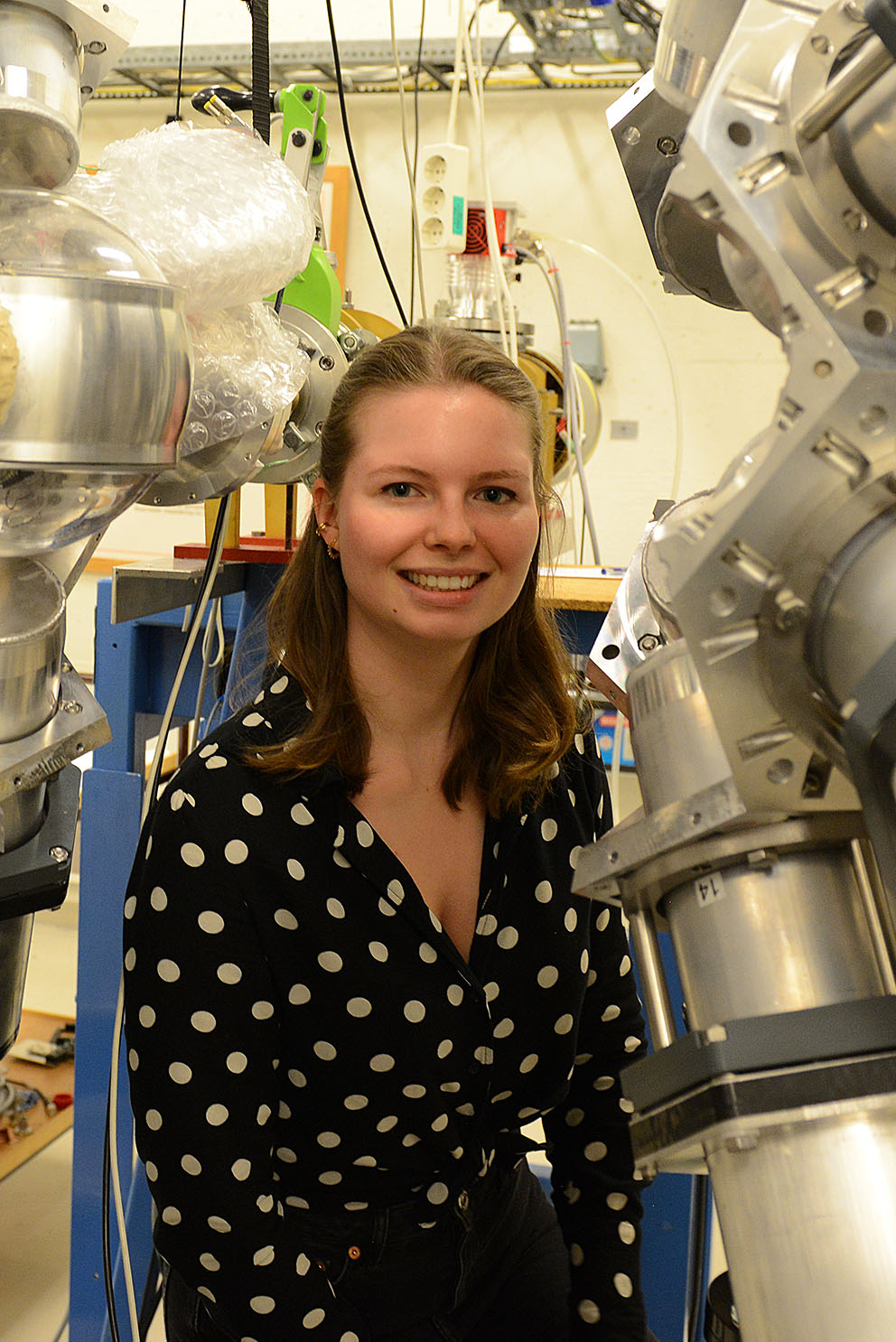Read more about my projects here (Norwegian):
Uventet resultat ga innsikt i hva som skjer når atomkjerner splittes
Student-eksperiment på plutonium vekker oppsikt blant toppforskere
Academic interests
Fission: what happens when heavy nuclei split?
In 1938, Otto Hahn and Fritz Strassmann stumbled upon something odd. They had bombarded the heavy nucleus uranium with neutrons, maybe expecting to find neighbouring elements among the reaction products. Instead, they found barium; a nucleus about half the mass of the original uranium, and far out of reach for any known nuclear reaction.
Over 80 years have passed since these findings were published, and we now know that Otto Hahn and Fritz Strassmann had induced fission in uranium. In this violent process, the nucleus rips apart and forms two smaller fission fragments while enormous amounts of energy is emitted. (Approximately a million times as much as in any chemical reaction!)
With the possibility of this huge energy release, fission was quickly applied in both energy production and weapons. Therefore, it might be surprising to hear that after 80 years of research, we are still yet to find a complete description of the fission process. Fission is a many-body quantum mechanical problem and is exceptionally difficult to describe - and thus also incredible fascinating to study.
I'm working with a small piece of the complicated fission puzzle, and I study the photons emitted in the fission process. We cannot see directly what happens in fission as the heavy nucleus splits, but the emitted photons carry information about the excitation energy and angular momentum of the system. By trying to understand the radiated fission photons, we hope to gain new insights into the mystery that is the fission process.
Together with colleagues from Norway and abroad, I take part in conducting experiments to measure these fission photons, at the same time as we test to see if the state-of-the-art fission models can reproduce the experimental results. I thus work in the border between experiment and theory, which I think is amazing - I both get insights into the best fission models at the same time as I can propose new experiments to further push the border of our knowledge.
Do you think this sounds exciting? Feel free to send me a mail or drop by my office!
Education
B.Sc University of Oslo: Physics, Astronomy and Meteorology, 2014-2017
M.Sc University of Oslo: Nuclear Physics, 2017-2019
PhD Student University of Oslo: Nuclear Physics, 2019 - 2023
Teaching
FYS4580, Lecturer, fall 2019, 2021 and 2023
FYS3500, Colloquium teacher, spring 2020, 2021
